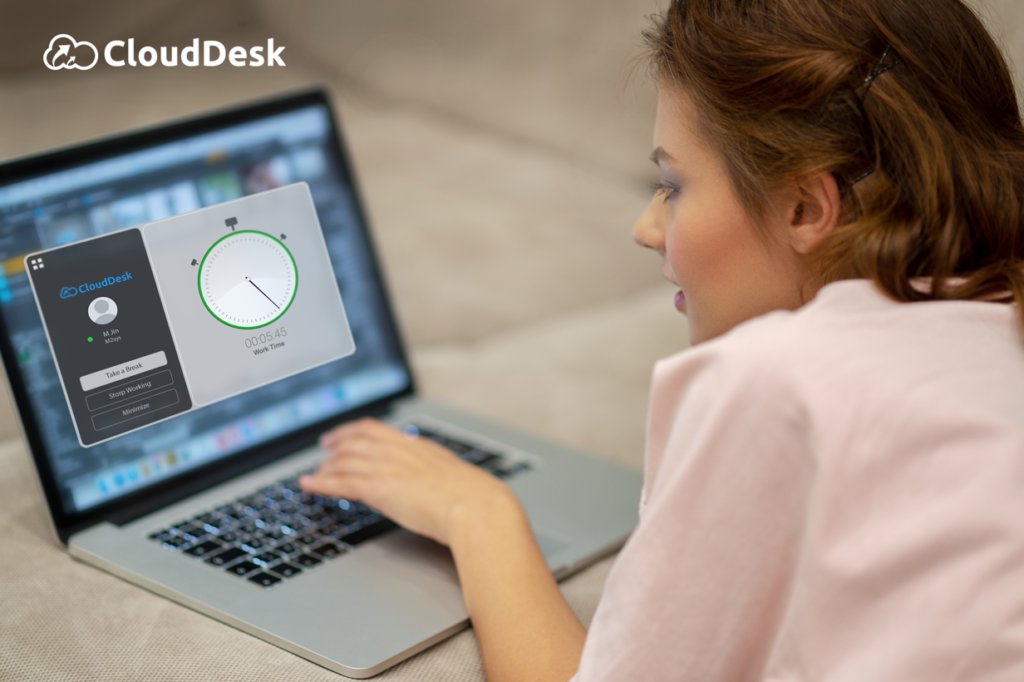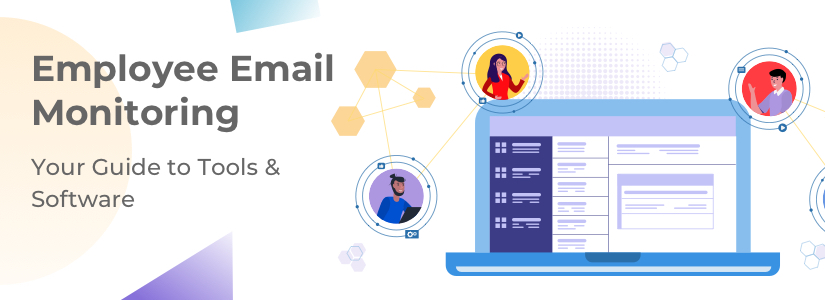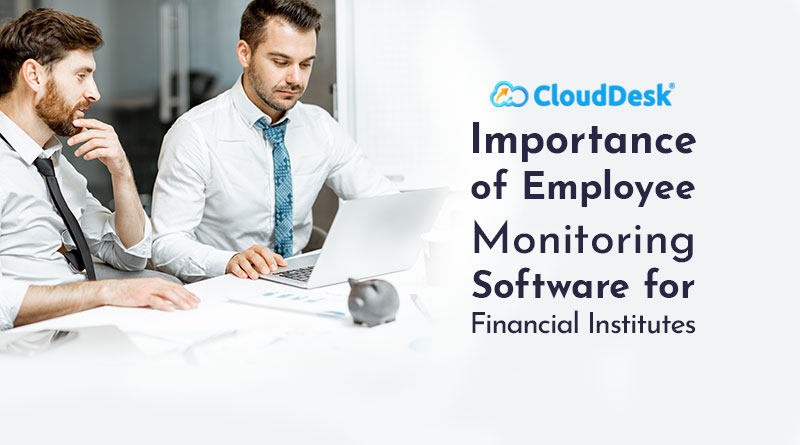Recommended Reasons To Picking Employee Monitoring Company
What Exactly Is Employee Monitoring Software? What Do I Need To Know Prior To Deciding It?Employee monitoring software is a kind of software used by organizations to monitor and record employees' actions. Employers can gather data about employee behavior such as keystrokes, internet usage as well as screenshots of applications, and more. The main purpose of employee tracking software is to increase productivity, ensure compliance with corporate policies, secure sensitive data and solve security issues. Several factors should be considered when selecting an employee monitoring program. Remember these essential aspects: Features- Decide which specific features you require according to the requirements of your business. The most common features are activity monitoring, website blocking, keystroke recording, tracking of application usage, email monitoring, and reports generation. Prioritize features that are aligned to your monitoring objectives.
Compliance and Privacy- Ensure that the software adheres to the ethical and legal guidelines for controlling employees. Make sure you are familiar with any applicable laws or rules, including privacy and data protection laws. Find software that offers clear and customizable settings that respect employee privacy rights.
User-Friendliness: Consider the software's accessibility and user-friendliness. Simple setup and a user-friendly interface will simplify the implementation and will save you time. It is recommended to look for dashboards that are customisable and reporting tools that allow you to easily interpret the data collected.
Integration and Compatibility- Make sure that the software integrates smoothly with your current IT infrastructure and with the software you are using including operating systems, email clients, tools for managing projects, and collaboration platforms. The compatibility ensures that you can monitor your business without affecting day-today operations.
Data Security- Evaluate the software's security features to protect the data collected. Access controls, encryption, secure storage of data and compliance with industry standard security protocols are crucial. Make sure the software vendor is well-known for its data protection track record and has strong security measures.
Scalability- The software must be able to scale up or down according to the size of your company. Select software that is easily scaleable to meet the changing demands of your business if you plan on expanding your workforce or opening new offices.
Analytics and Reporting: Check out the software’s analytics and reporting capabilities. You should look for features that give you an extensive view of the productivity of employees, their allocation of time, and trends. Customizable reports and analytics help you make informed decisions and determine areas of improvement.
Customer Support - Evaluate the quality and availability of customer service provided by software vendors. Examine their responsiveness, accessibility and the amount of technical assistance they provide. When problems arise, good customer service ensures that you get prompt assistance.
Cost – Consider the pricing models of the software. Understanding the pricing structure is important, as it includes additional costs for updates, support or other features. You should balance your budget as well as the worth of features against the amount you are able to afford.
Transparency and Communication with Employees - Maintain clear communication and openness when working with employees in relation to monitoring software. Explain the scope and purpose of the monitoring in a clear manner. Discuss any concerns, and ensure they understand that their privacy will still be protected.
By evaluating these factors you can make a well-informed choice that meets your company's specific needs and respects employee privacy while meeting all lawful requirements. See the recommended time tracking monitoring software for site info.

What Are The Various Characteristics Of The Employee Monitoring Software?
The software for monitoring employees comes with various features to monitor and analyze the activities of employees. The specific features can differ among different software options However, here are a few typical features that are found in all the employee monitoring software: Activity Monitoring- This feature captures and logs employee activities, including the websites they visit, the applications they use along with the file types accessed, as well as time spent in each job. It gives an extensive summary of the way employees spend their time at work.
Keystroke Recording- Keystroke recorders can capture every keystroke made by a worker. It can be used to assist in the identification of productivity bottlenecks, for identifying unauthorized activities and gathering evidence during an investigation.
Screenshots, screen recordings and screen shotsScreenshots, and screen recordings - Certain applications take screenshots of a computer screen at specific intervals. Others record their screen in real-time. This can be useful to monitor productivity levels or troubleshooting.
Internet Usage Tracking: This feature allows employees to monitor their internet activities including the websites they visit, the searches they conduct and downloads. This feature assists in identifying excessive non-work-related browsing, which could pose security risks, as well as policies that are not being followed.
This feature allows you to track the applications that employees use while at work. It allows you to see which applications are the most popular. It can also help to identify inappropriate or illegal use of the application.
Email Monitoring - Monitoring email allows employers the ability to track employee email, which includes sent and receive messages, attachments and email content. It assists in ensuring compliance with company policies to prevent data leaks and uncover any suspicious activity.
Tracking of documents and files This feature monitors changes in the form of transfers, modifications, and additions to files. It helps safeguard sensitive data by monitoring collaboration between documents and making sure that the data is protected according to protection guidelines.
Remote Monitoring - Employers are able to supervise employees who work remotely or from other locations. Employers are able to monitor their activities and guarantee the efficiency of employees regardless of where they are.
Productivity Analysis- Employee monitoring software often includes productivity analysis features that provide insights into employee work patterns, time allocation, and overall productivity levels. These analyses can help to find areas for improvement and optimize workflow.
Analysis and Reporting- Robust analytics and reporting features provide detailed reports and graphs based upon the collected data. These reports can provide useful information about employee performance, the allocation of time and resources.
Software that can provide features to manage compliance and policies can ensure that a company's rules and regulations are adhered to. They allow employers to establish guidelines for acceptable usage of computers and internet access.
Alerts/Notifications: Alerts/notifications alert managers or employers when certain activities or events occur. As an example, they could alert to excessive internet usage and attempts to access restricted websites, or suspicious behavior.
Be aware that these features are included in a variety of software options for monitoring employees. Be aware of the features offered by software that is compatible with your objectives for monitoring and stick to ethical and legal guidelines within your region. View the top employee monitoring software for site examples.

How Does Employee Tracking Software Conform To The Compliance And Privacy Law
The software's capability to adhere to privacy and compliance regulations is critical. Monitoring software for employees must adhere to certain regulations regarding privacy and compliance. While they may differ in accordance with the country of origin, some of them are common. Employee monitoring software usually includes tools that allow employers to clearly communicate their monitoring policies to employees. This might include sending written notices, obtaining permission via consent forms or implementing an employee handbook that details monitoring practices.
Transparent Monitoring policies- Employee monitoring programs promote transparency because they ensure that employees know what kind of information is collected, the objective of monitoring is, and how monitoring activities are performed. Comprehensive and clear policies help employees understand the boundaries of monitoring and their rights in relation to privacy.
Data minimization - In order to comply with privacy laws and employee monitoring software, a process of reduction is commonly used. Data minimization means that only vital data is collected, retained and discarded. This software reduces privacy risks by only collecting information that is required to keep track of.
Certain software for employee surveillance anonymizes, or aggregates, data in order to safeguard employees' privacy. Anonymization removes all personally identifiable data (PII) and makes it impossible to link data to individuals. The aggregated data is a combination of multiple employees' information to gain insights at the group level, without identifying specific individuals.
Secure Data Storage and encryption - Software for monitoring employees places a top priority in the protection of the data that is collected. To safeguard data from unauthorised access, breaches or accidental disclosure, it utilizes encryption and secure storage methods. This includes protecting data in transit and at rest.
Access Controls and Restricted Privileges - To ensure compliance employee monitoring software typically offers access control and privileges that are granular. Employers can restrict access to the monitoring information to only those who need it legally, such as HR administrators or HR personnel.
Rights and Remedies for Employees Rights and Remedies The protection of the rights of employees is crucial for ensuring that they are in compliance with privacy and compliance laws. Employee monitoring software often includes options that allow employees to access their own monitoring information, make corrections, or submit complaints. This allows employees to act and exercise their rights if they believe their privacy has been infringed.
Compliance with Data Protection Regulations – Software for employee monitoring is developed to be in compliance with any applicable regulations. For example the General Data Protection Regulations of the European Union and the California Consumer Privacy Acts of the United States. The term "compliance" refers to the implementation of safeguards for data privacy and respecting the rights of data subjects, and ensuring legal processing.
It's important to note that although employee monitoring software can support compliance, companies should also seek legal advice and stay updated on pertinent laws and regulations that are in their area of responsibility. Compliance with privacy and compliance laws requires a holistic approach that extends beyond the software. This means clear policies, employee training and constant monitoring of compliance. Follow the recommended time tracking monitoring services for blog recommendations.
